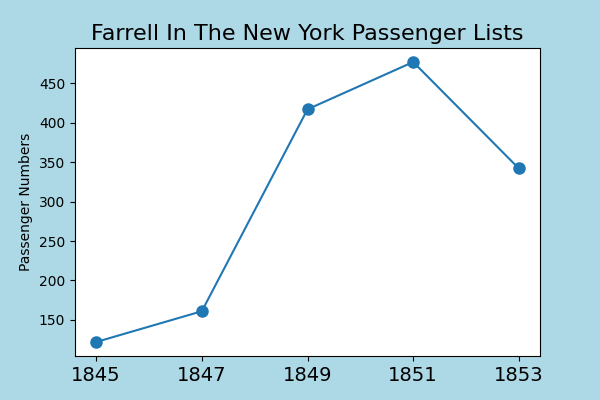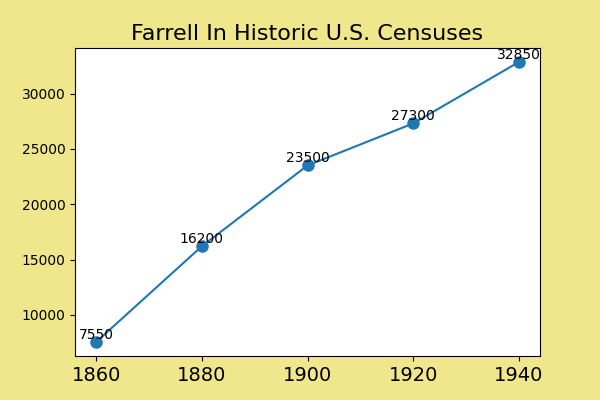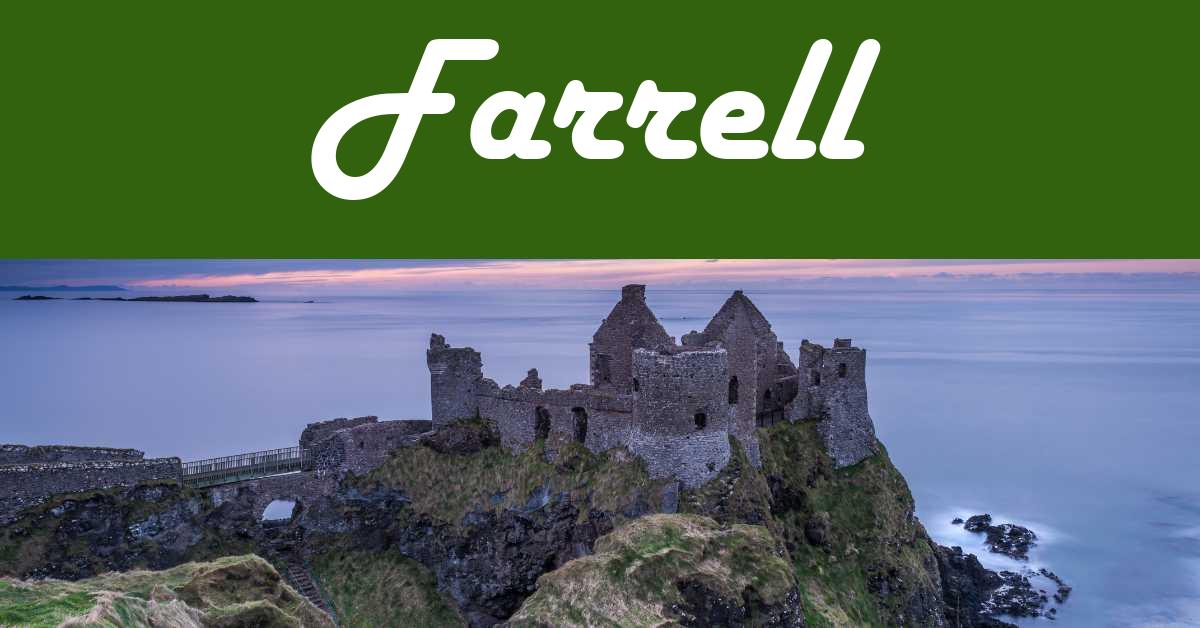This article looks at how common Farrell is as a last name in Ireland and the United States from the 19th century to the present day.
You’ll learn the meaning and origins of the Farrell surname while exploring some notable and famous people that held it.
I use census records, emigration lists, and military archives to uncover fascinating patterns. If you’re studying your genealogy, check out my sources at the end of the post so you can do your own research.
How Common Is Farrell As A Surname In Ireland?
Detailed current statistics about surnames are not publicly released by the Irish government. Instead, they offer the ten most frequently occurring surnames among newborns in the previous year. Farrell
However, an Irish genealogist studied the top one hundred surname numbers in Ireland between 1992 and 1997. Seán Murphy based his research on telephone books. This isn’t as accurate as a census but gives a good approximation.
Farrell was ranked 36 in the top one hundred names in this decade with a total of 17,100 entries.
This graphic shows how it ranks compared to the 1st, 33rd, 66th, and 100th entries in the survey:

Farrell In The Early 1900s
The only complete Irish censuses that are available to the general public are those from the years 1901 and 1911. They offer two detailed snapshots of the population.
So, let’s focus on the early 1900s.
I used online archives to calculate the total numbers by surname. I consider these estimates due to some percentage of transcription errors. So, I’ve rounded the numbers to the nearest fifty.
There were 12,350 residents named Farrell on the island in 1911.
Ten years earlier, Farrell had about 12,750 residents in the 1901 census.
Population Estimates In The 1890s
A study of Irish surnames was conducted in 1890 by the head of the Civil Registrations Office. It was published as a “Special Report on Surnames In Ireland.”
The survey estimated that there were about 14,700 people named Farrell in the country.
Emigration To America After The Irish Famine
The Irish diaspora is large and widespread with a significant number of people emigrating to other parts of the globe. The destinations traditionally have been England, the U.S., Canada, and Australia. Emigrants were driven by various factors like political unrest, poverty, and food scarcity.
The largest wave of emigration to the United States occurred during the 19th century. The peak was in response to the Great Irish Famine, which took place between 1845 and 1852. A plant disease devastated the main food and income crop for much of the population.
I reviewed the Farrell name in the shipping passenger lists arriving in New York during this period. The departures were from both Ireland and England.
This picture shows how the numbers rose and fell in the years after the famine:

How Common Is Farrell As A Last Name In The U.S.?
Based on the 2010 U.S. census, the name Farrell ranks about 652 among Irish names in America with 52,321 bearers.
Although the 2010 census has exact numbers and rankings, the rank I assign here is my estimate. If you’re curious about how I got there, here’s a brief explanation…
Estimating Rank In The United States
Historically, some Irish families with Gaelic surnames took English-sounding names as translations under the influence of colonization.
As these names also have English origins, they will have been brought to the United States by both British and Irish immigrants. Because the census doesn’t ask about specific European origin (e.g. England vs Ireland), it’s impossible to identify the proportion with Irish heritage.
I reviewed the census to identify which names are predominantly Irish in origin. In order to estimate the relative rankings of “Irish” names, I’ve mostly excluded surnames that have varying origins.
Farrell In Historic Times
It’s interesting to look at how the numbers of a surname change over time in a relatively young country like the United States. These changes can reflect the broader demographic shifts within the nation. It’s not just migration from outside. It’s also birth rates, improved child mortality, and people living longer.
The historic census records have been transcribed and digitized. I used online archives to run counts of surname populations.
But the totals can’t be exactly accurate due to transcription errors. So, I’ve rounded the numbers to the nearest 50 in the graph below.
This picture shows the numbers every twenty years from 1860 to 1940:

These are the numbers in the graph:
- 1860: 7,550
- 1880: 16,200
- 1900: 23,500
- 1920: 27,300
- 1940: 32,850
Farrell In World War II
Approximately 8.3 million men and women joined the United States Army during World War II. Many had Irish ancestry. Some had been born in Ireland before leaving the country.
There were registration records for 2,024 soldiers named Farrell who enlisted between 1938 and 1946.
There were 30 who were born in Ireland.
Farrell Surname: Meaning And Origin
Farrell
Farrell comes from the Gaelic surname Ó Fearghail, which means “descendant of Fearghal”.
The personal name Fearghal is derived from two Gaelic words: fear which means “man,” and gal which means courage. So, the full name is akin to “descendant of the courageous man.”
Famous Or Historic People Named Farrell
Here are some notable people with the family name:
- One early prominent family were chiefs in what is now County Longford. The clan divided into two major branches of O’Farrells. They retained influence until the reign of James I.
- John Farrell (1826 – 1865): born in Dublin, John Farrell was a British Army sergeant during the Crimean War. He was awarded the Victoria Cross for bravery for his actions during the Charge of the Light Brigade.
- John (Red Rocks) Farrell (1857 – Unknown): a notorious thief and member of the Whyos street gang of New York during the second half of the 19th century.
Sources

External Research
The Ireland 1990s estimates are from Seán J. Murphy’s research paper.
The population estimates of 1890 are based on the “Special Report on Surnames in Ireland“, published in 1909.
The population figures for the 2010 U.S. Census come from a file provided by the U.S. Census Bureau.
Internal Research
Some of the population numbers are based on my own research and calculations using online archives. I’ve rounded those numbers to the nearest 50 to account for transcription errors and other technical issues with online databases of this type.
The Irish census estimates for 1901 and 1911 are my calculations based on the Irish National Archives
I plotted the emigration figures from 1845 to 1854 based on calculations from the archives of the New York Passenger Lists (1820-1957).